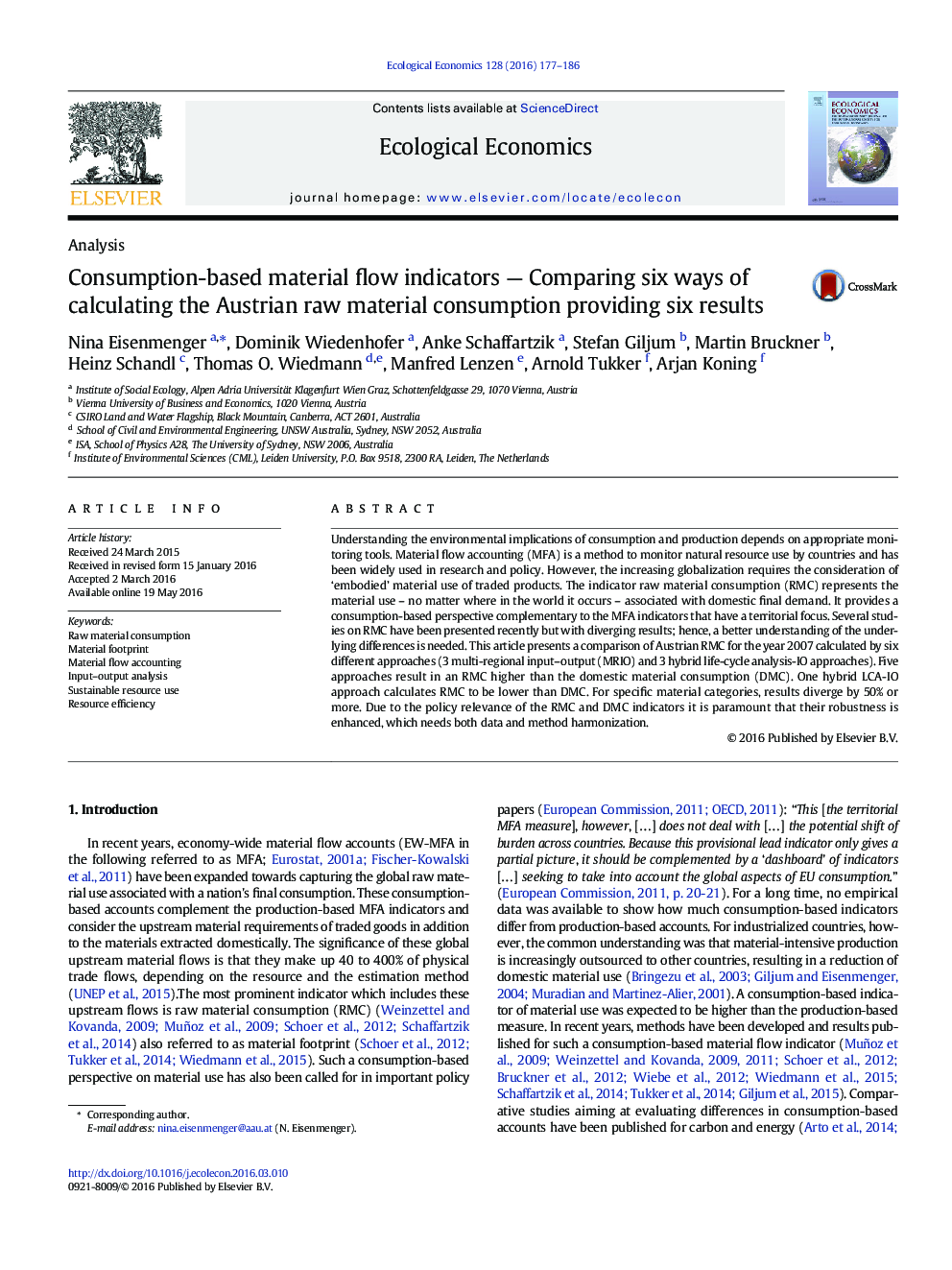| کد مقاله | کد نشریه | سال انتشار | مقاله انگلیسی | نسخه تمام متن |
|---|---|---|---|---|
| 5049092 | 1476351 | 2016 | 10 صفحه PDF | دانلود رایگان |

- Consumption-based material use for Austrian ranges from 21Â t/cap to 30Â t/cap between calculation methods
- Five methods calculate RMC to be higher than the domestic material consumption (DMC), two result in an RMC lower than DMC
- the variation between the 7 RMC estimates is higher than the difference to DMC
- in some approaches, the raw material trade balance for biomass and non-metallic minerals changes from positive to negative
- both, DMC and RMC address important but different aspects of resource use
Understanding the environmental implications of consumption and production depends on appropriate monitoring tools. Material flow accounting (MFA) is a method to monitor natural resource use by countries and has been widely used in research and policy. However, the increasing globalization requires the consideration of 'embodied' material use of traded products. The indicator raw material consumption (RMC) represents the material use - no matter where in the world it occurs - associated with domestic final demand. It provides a consumption-based perspective complementary to the MFA indicators that have a territorial focus. Several studies on RMC have been presented recently but with diverging results; hence, a better understanding of the underlying differences is needed. This article presents a comparison of Austrian RMC for the year 2007 calculated by six different approaches (3 multi-regional input-output (MRIO) and 3 hybrid life-cycle analysis-IO approaches). Five approaches result in an RMC higher than the domestic material consumption (DMC). One hybrid LCA-IO approach calculates RMC to be lower than DMC. For specific material categories, results diverge by 50% or more. Due to the policy relevance of the RMC and DMC indicators it is paramount that their robustness is enhanced, which needs both data and method harmonization.
Journal: Ecological Economics - Volume 128, August 2016, Pages 177-186